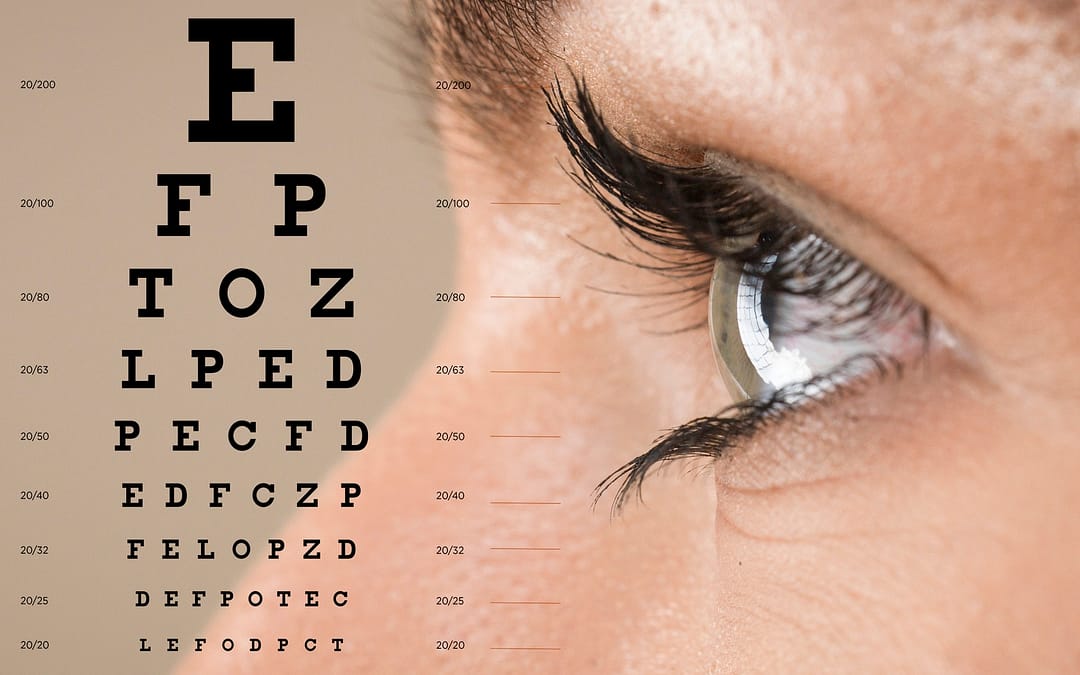Did you know that 6/6 vision is the metric equivalent of 20/20 vision? The difference lies in the measurement systems: 6/6 uses a 6-meter testing distance, while 20/20 uses a 20-foot testing distance. South Africa uses the metric system, similar to many other countries, but the term 20/20 is still widely recognized.
How is Vision Measured?
Distance vision impairment is typically assessed using a Snellen eye chart, which measures visual acuity.
Figure 1: Snellen Eye Chart (Description of a chart starting with large letters at the top and smaller ones at the bottom)
During an eye exam, you sit a set distance (usually 20 feet or 6 meters) from the chart. Due to space constraints, a mirror may be used to simulate this distance. You read from the top down, starting with larger letters and moving to smaller ones. The smallest line you can read accurately is compared to the distance an average person can read the same line, resulting in a fraction like 20/20 or 6/6.
What does 20/20 Vision actually mean?
20/20 vision means ‘normal’ distance vision. For instance, 20/40 (6/12) vision indicates that at 20 feet (6 meters), you can read what a person with 20/20 (6/6) vision can read from 40 feet (12 meters). Essentially, 20/40 vision is less sharp than 20/20.

Figure 1: Snellen Eye Chart
Vision Impairment in South Africa
Many South Africans live with significant vision impairment or blindness, and a large percentage of these cases are avoidable or preventable. Vision impairment can greatly affect quality of life, impacting daily activities, reducing independence, and increasing the risk of falls and injury.
Leading Causes of Vision Impairment Globally:
- Uncorrected refractive errors (short-sightedness, long-sightedness, astigmatism, and presbyopia)
- Cataracts
- Age-related macular degeneration
How is Vision Measured?
Distance vision impairment is typically assessed using a Snellen eye chart, which measures visual acuity.
Figure 1: Snellen Eye Chart
(Description of a chart starting with large letters at the top and smaller ones at the bottom)
During an eye exam, you sit a set distance (usually 20 feet or 6 meters) from the chart. Due to space constraints, a mirror may be used to simulate this distance. You read from the top down, starting with larger letters and moving to smaller ones. The smallest line you can read accurately is compared to the distance an average person can read the same line, resulting in a fraction like 20/20 or 6/6.
Understanding 20/20 Vision
20/20 vision means ‘normal’ distance vision. For instance, 20/40 vision indicates that at 20 feet, you can read what a person with 20/20 vision can read from 40 feet. Essentially, 20/40 vision is less sharp than 20/20.
Is 20/20 Vision Perfect?
20/20 vision represents normal visual acuity but isn’t necessarily perfect. Some people have better than 20/20 vision, such as 20/15, meaning they can see from 20 feet what an average person sees from 15 feet. Visual acuity measures sharpness but doesn’t consider depth perception, color vision, or ability to focus on moving objects. People with 20/20 distance vision might still need glasses for close-up work due to presbyopia, which typically starts in mid-to-late forties.
What Does ‘Legally Blind’ Mean?
There is no single definition for ‘legally blind.’ It varies by country and organization. Generally, it refers to best-corrected visual acuity worse than 20/400 (3/60).
Minimum Vision Requirements for Driving in South Africa
To get a driver’s license in South Africa, you must meet certain vision criteria:
- Visual acuity: At least 6/12 in one or both eyes, with or without corrective lenses.
- Peripheral vision: A horizontal field of at least 120 degrees.
Can Visual Acuity Be Improved?
Light entering the eye is bent (refracted) by the cornea and lens to focus on the retina. Conditions like cataracts or refractive errors disrupt this process.
Figure 2: Refraction of Light in the Eye (Diagram showing light entering the eye)
Cataracts: Cataracts cloud the lens, scattering or blocking light. Surgery to replace the cloudy lens with an artificial one can restore vision.
Refractive Errors: Errors like short-sightedness, long-sightedness, and astigmatism are caused by irregularly shaped corneas. Glasses, contact lenses, or surgeries (LASIK, SMILE®, ASLA/PRK, or implantable contact lenses) can correct these errors.
For more information or to schedule an eye exam, contact Classic Eyewear today.



Recent Comments